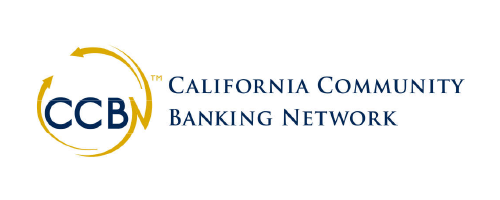Investing in Your 401(k) at Market Highs: Should You Be Worried?
Investing in Your 401(k) at Market Highs: Should You Be Worried?
By Isaac Coutier, Impact Retirement Advisors
The S&P 500 recently closed at 6,268.56 on July 14, 2025, holding near record levels after a strong run in June and continued momentum into July. For many 401(k) investors, that raises a familiar, anxious question: Am I investing at the top?
It’s a fair concern. After all, it’s hard to feel confident putting money into the market when everything seems expensive. While it may feel counterintuitive, history shows that periods of market strength are often followed by continued growth—not immediate decline. That discomfort investors feel at market highs is natural, but staying the course through these moments has consistently proven to be an effective strategy. For long-term 401(k) investors, contributing during market highs has not only been normal—it’s often been one of the most powerful ways to build lasting wealth over time.
Why Market Highs Make Investors Pause
When the market is breaking records, it can feel like you’ve already missed out—and the fear of a pullback often causes investors to hesitate or stop contributing. That’s understandable. But timing the market is extremely difficult, and often counterproductive. In fact, more than 30% of all months since 1950 have ended with new market highs. If investors pulled back every time the market peaked, they would’ve missed out on the very growth that drives long-term success.
The Power of Consistency (Even at Highs)
Your 401(k) is one of the best tools for long-term retirement success because of a built-in strategy called dollar-cost averaging. Every pay period, you’re investing a consistent amount—buying more shares when prices are low, and fewer when prices are high. This approach helps reduce the emotional highs and lows of market timing and smooths your investment experience over time. Long-term success isn’t about pinpointing the perfect entry—it’s about consistent participation and leveraging the power of dollar-cost averaging over time. It’s that steady, disciplined approach that drives the long-term growth behind a successful retirement portfolio.
What the Data Says About Buying at Highs
Market highs tend to make investors uneasy—but interestingly, history and research suggest that new highs are not necessarily a ceiling. In fact, they can be part of a continued upward trend.
According to recent projections from Goldman Sachs, the S&P 500 could reach 6,900 by mid-2026, representing an approximate 11% increase from current levels. This outlook reflects confidence in sustained earnings growth, resilient corporate performance, and broader economic tailwinds. Meanwhile, Morgan Stanley has expressed optimism across key sectors such as energy, healthcare, and technology, citing strong fundamentals and innovation-driven momentum. Some estimates suggest potential growth in these sectors ranging from 13% to 16%, supported by ongoing advancements in artificial intelligence, anticipated monetary policy shifts, and robust earnings expectations.
Taken together, these forecasts highlight a broader theme: market highs, while psychologically challenging, are not uncommon during extended periods of growth. In many cases, they reflect the market’s positive response to improving conditions, not a signal of immediate reversal. Understanding these dynamics can help frame current market levels not as a warning sign, but as a data point within a longer-term narrative of progress.
Your 401(k): Built for the Long Game
Remember, your 401(k) isn’t a day-trading account. It’s designed for retirement, whether that’s 5, 15, or 30 years away. Temporary market dips—whether they happen tomorrow or next year—are just speed bumps on the road to long-term growth.
What matters more than perfect timing is taking full advantage of:
• Employer matching contributions
• Tax deferral
• Long-term compounding
• Staying invested, especially through volatility
Should You Adjust Anything?
If your investment strategy is aligned with your time horizon, risk tolerance, and retirement goals, then a new market high shouldn’t necessarily prompt a change. That said, reviewing your plan once or twice a year is always a smart move.
Ask yourself:
• Am I contributing enough to hit my retirement goals?
• Am I getting the full employer match?
• Is my portfolio still appropriate for my age and comfort with risk?
If those boxes are checked, it may be a strong indication that staying the course remains the right
approach.
Final Thoughts from Impact Retirement Advisors
Market highs can feel like a cliff edge, but in reality, they’re often mile markers on the road to progress. Staying consistent in your 401(k)—even when it’s emotionally difficult—can lead to powerful long-term results.
At Impact Retirement Advisors, our mission is to equip you with clarity and confidence—never fear or guesswork. If you’re unsure about your current allocation, the direction of the market, or whether your retirement strategy is on track, don’t hesitate to connect with us. We’re here as a resource to help you navigate your 401(k) with insight, diligence, and support every step of the way.
Let’s work together to ensure your 401(k) is working as hard for your future as you are today.
Isaac Coutier
Investment Advisor Representative C: (952) 378-6983
www.impactretirementadvisors.com
Isaac@impactretirementadv.com
DISCLOSURES
The views, opinions and content presented are for informational purposes only. Advisory services offered through Impact Retirement Advisors, LLC., an Investment Adviser registered with the U.S. Securities & Exchange Commission. The information is not intended to be, and should not be considered as, impartial investment advice or an offering of investment advisory services. The information contained herein may be subject to change at any time without notice. Past performance is not indicative of future results.
